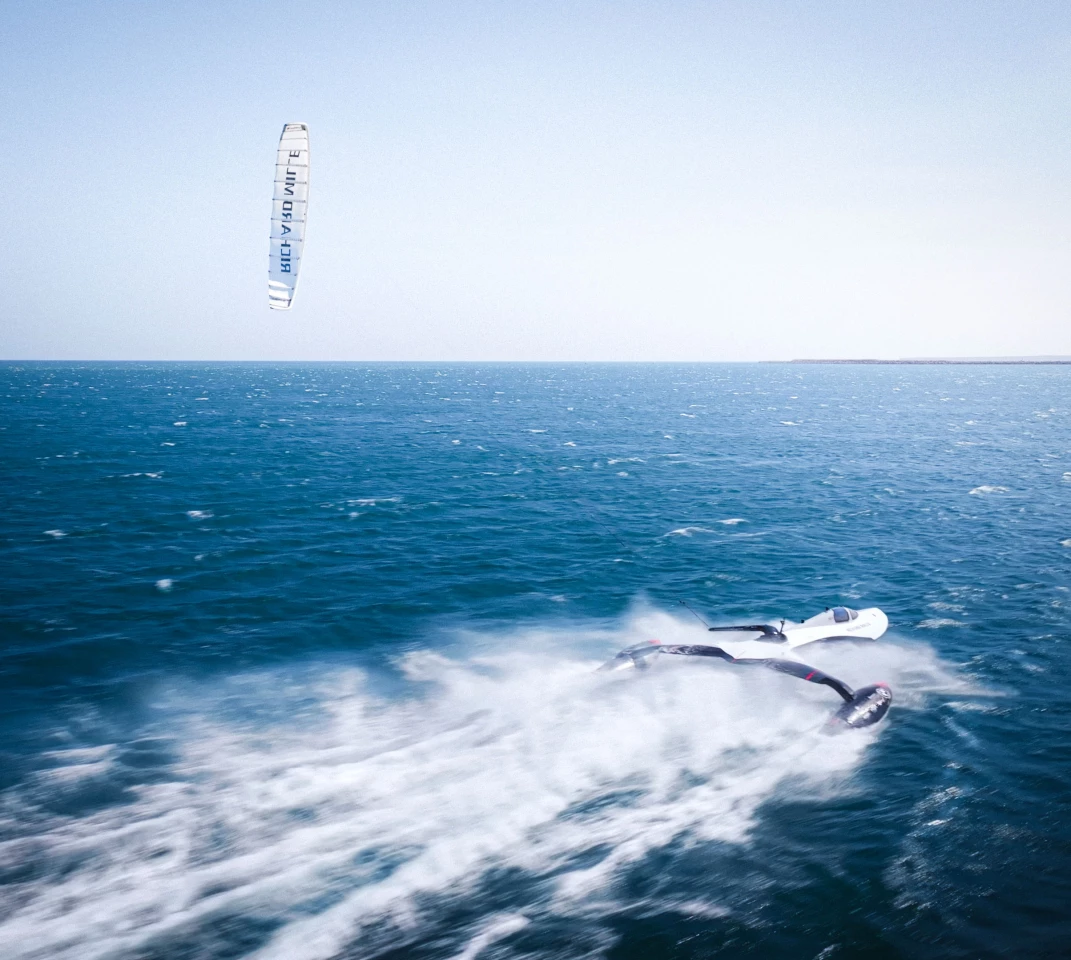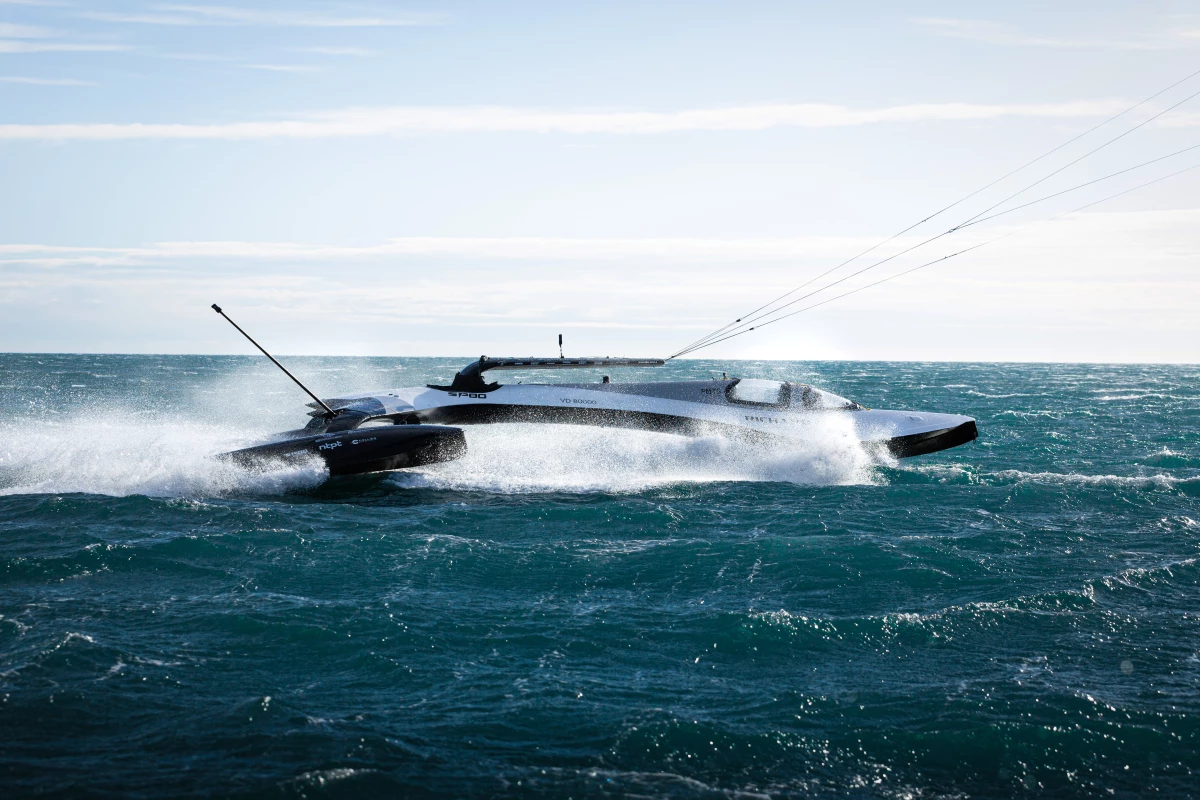Enjoy some hairy onboard footage as this alien spaceship of a sailboat records the second-fastest speed in history. The outright record is now well within reach, and this outrageous kite-powered boat is designed to absolutely smash it.
You might expect the world's fastest sailboat to levitate out of the water on a low-drag hydrofoil – but no. Swiss team SP80 has chosen a super-lightweight trimaran hull design, 10 m (33 ft) long and 7 m (23 ft) wide, that'll stay in contact with the water. Hydrofoils, according to the team, aren't suitable for this gig, since the low-pressure zone caused by these underwater wings causes water to boil into vapor at high speeds in a process called cavitation, causing dangerous levels of drag and instability at speeds over about 60 mph (~100 km/h).
It looks more like some kind of futuristic aircraft than a sailboat – there's no mast, for starters. Instead, there's a giant parachute of a kite, attached via cables to a wing-like control arm hanging low off the left side of the boat. Hence the width of this beast – that kite is designed to pull hard from one side, and the rest of the boat is designed to turn that pull into maximum forward velocity while resisting rollover.
It also needs to resist the kite's tendency to pull the boat up and out of the water, so on the right side there's a foil blade designed to pull downward and to the right as the speed comes up. Managing the kite will be a full-time job on high speed runs, so the SP80 seats two pilots. One in front to steer the boat, the other sitting behind in a tandem formation to operate the kite-sail.
The outright world speed sailing record still stands at 65.37 knots (75.23 mph, or 121.06 km/h) and was set some 13 years ago by Paul Larsen in the Vestas Sailrocket 2. But that's not team SP80's target – these guys reckon their kite-powered trimaran is good for north of 80 knots (about 92 mph, or 150 km/h).
After several years of development and testing work, the SP80 is starting to stretch its legs, and the team has just announced the second-fastest speed in sailing history: 58.261 knots (67.1 mph, or 108 km/h). It doesn't sound like a whole lot; a standard Sea-Doo RXP-X 325 RS jet ski would still walk away from it. But it's a couple of knots faster than any America's cup yacht has managed, and the view from the cabin looks and sounds sketchy as hell:
“This is a major milestone for the entire team,” said Mayeul van den Broek, SP80 pilot, in a press release. “Very few sailboats in history have broken the 100-km/h barrier, and weʼre now tangibly closing in on our ultimate goal. Whatʼs especially encouraging is being able to repeat those speeds multiple times throughout the week. It confirms not only the boatʼs reliability, but also its capacity to go even faster. From here, the work continues: analyzing the data on land, and refining our handling on the water as soon as the wind allows.”
There's work to do yet; the SP80 did indeed break 100 km/h – but only momentarily. Larsen's official record was an average speed over 500 m (1,640 ft), as are most World Sailing Speed Record Council certifications. In those terms the SP80's best pass to date was just 48.645 knots (56 mph, or 90 km/h).

But the team will continue testing over the next month, off the coast of Leucate and Port-La Nouvelle in southern France, and there's every chance they'll finally relieve Larsen of his record.
Incidentally, when we first started following this project, there was an even more bizarre kite-powered design racing against it. The Syroco Speedcraft, from France, proposed a "weightless boat" dangling in mid-air, pulled upward by the kite, and anchored in the water by a hydrofoil pulling downward. Check out the prototype in flight:
Bonkers, right? Unfortunately, that video was released at the end of 2022, and that's about where the trail goes cold. So we'd love to know what team Syroco is up to – it's very cool watching the SP80 close in on the world record, but it'd be even more fun with some competition breathing down its neck!
Source: SP80








